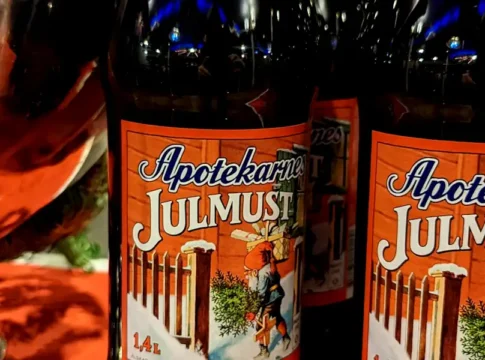 Photo: AleWi (CC BY-SA 4.0)
Photo: AleWi (CC BY-SA 4.0)Must: Sweden’s Holiday Drink That Outsells Coca-Cola
Meet Sweden’s must—julmust and påskmust—a malt-based festive drink that defines holiday flavor and famously outshines Coca-Cola at Christmas.

Sweden’s drinking culture has a special place for Swedish punsch, a distinctive liqueur with a long history that dates back to the 18th century. This sweet, complex beverage offers a taste of Swedish tradition and craftsmanship.
The story of punch begins in 1733 when the Swedish East India Company ship “Fredricus Rex Sueciae” arrived in Gothenburg, bringing arrack from Java. Sailors had created a warming concoction during their voyage, mixing arrack with sugar, tea, citrus, and spices. This blend quickly gained popularity in Sweden, initially among the wealthy who could afford imported ingredients.




Swedish punsch typically contains
The result is a sweet, rich flavor with complex notes that set it apart from other liqueurs.
This drink became deeply ingrained in Swedish culture.
In the 1840s, Johan Cederlund & Söner created the first bottled punsch, using Batavia arrack, sugar, and acidic wines instead of citrus for better shelf stability. This innovation led to widespread consumption and various branded versions like Kavalleri Punsch and Ishavs Punsch. Cederlund pioneered the bottling of their iconic Punsch in the cellars beneath the Royal Palace, utilizing large storage facilities like the 24,000-liter “Stora Stycket” container (“The Large Piece Container”) to facilitate production and distribution.
While its popularity waned in the 20th century, this liqueur has experienced a revival:
Today, punsch remains a symbol of warmth and hospitality in Sweden, enjoyed as an aperitif, digestif, or in cocktails. Its complex flavors and rich history continue to captivate drink enthusiasts worldwide, offering a taste of Swedish tradition in every sip.
![]() Swedish Punsch
Swedish Punsch
![]() Punsch
Punsch